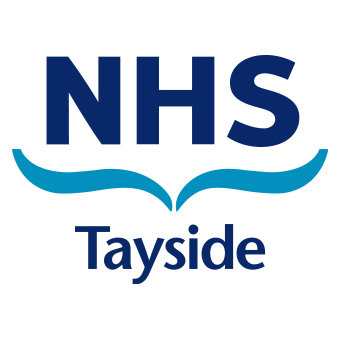- Record vital signs
- Full history & examination
- Consider ECG
- Any safeguarding concerns?
- Discharge with safety-net advice or observe for a maximum of 8 hours
Paediatric drowning and hypothermia protocol

Warning
Is the child conscious? Is there respiratory distress or a cardiac arrest?
- Support respiration (oxygen, high flow, NIV, I&V)
- CXR
- Record temperature and rewarm
- Consider ECG
- IV/IO access and consider FBC, U&Es, LFTs, blood gas
- Cardiovascular support required? IV fluids (warm)
- Intubate and ventilate
- Nasogastric tube
- IV/IO access
- Check: FBC, U&Es, LFTs, blood gas, glucose
- Measure core temperature & rewarm if appropriate
- Treat shock with 10-20 ml/kg boluses of 0,9% sodium, chloride or isotonic fluid (e.g. Plasmalyte 148)
- Imaging: CXR +/- CT Head
- Consider ECG
Passive rewarming:
- Remove wet clothes
- Warm blankets
- Warmed IV fluids (40°C)
- Forced air warmers
- Warm air system (e.g. Bair Hugger)
- Radiant lamp
- Ensure warm ambient temperature
- Heated humidified ventilator gases
Active rewarming:
- First line - bladder irrigation with warm sodium chloride (42°C)
- Second line -gastric lavage with warm sodium chloride (42°C)
- Warm IV fluids (39°C)
- Warm ventilator gases (42°C)
- Consider for adult size patients:
- ICY catheter/CVVH
- Liaise early with ICU if appropriate
Important points:
- Case reports of good outcomes in ice cold water (hypothermia prior to arrest)
- Continue resuscitation until core temperature is at 32°C
- Discuss with paediatric critical care early (ECMO or stop resuscitation)
Good prognosis:
- Short submersion time.
- GCS above 5.
- Cardiac output and spontaneous respiration in A+E.
Bad prognosis:
- Age below 3yrs.
- Submersion time over 5 min.
- CPR over 10min, asystole at the scene, resuscitation of cardiac arrest over 30mins.
- Multiple organ failure.
Extremely poor prognosis:
- Submerged over 25 min or no ROSC within 30 mins.
Discuss with PICU early
Airway:
- Assume cervical injury, immobilise C-spine
- High flow O2
- Intubation with cuffed endotracheal tube
Breathing:
- Bag mask ventilation if required
- Once intubated:
- Recruitment manoeuvres
- Target TV 6-8 mls/kg
- Limit PIP to 30 cmH2O
- Optimise PEEP (may need 10-15 cmH2O)
- Permissive hypercapnia (caution in head injury)
- Permissive hypoxia (aim SpO2 90-94%)
Circulation:
- Obtain secure IV access (IO/peripheral/central)
- Aim for age appropriate MAP (inotropes if required)
- If CV stable: restrict fluids to 50% maintenance
- If CV unstable follow changes to APLS Hypothermia algorithm:
- Patient with temperature below 30°C:
- Limit defibrillation to 3 shocks
- Do not use inotropic or antiarrhythmic drugs (e.g. adrenaline)
-
Patient with temperature 30°C - 35°C:
- Double the dose interval for inotropic or antiarrythmic drugs (e.g. adrenaline)
- Continue resuscitation until core temperature is ≥32°C or cannot be raised
- Patient with temperature below 30°C:
Disability/Neuroprotection:
- Core temp over 35°C (see rewarming methods)
- 30°head up tilt
- Ventilate to ETCO2, target 4-5kPa
- Normoglycaemia
- Sodium 145-150 mmol/L (2-5ml/kg of 2.7% NaCl over 30mins)
- Blood gas and glucose
- FBC, coagulation
- U&Es including CK –correct abnormalities
- LFTs, CRP, serum osmolality
- Consider drug and alcohol screen
- CXR
- Consider CT (trauma) if required
- Full secondary survey once resuscitation complete
- 2 x forced air warmers (Bair huggers) with under body and full body blankets
- Warmed IV fluids
- Pre-prepare fluid boluses but keep in warming cabinet until required
- Further warmed IV fluids available from theatre suit and labour ward
- Blood warmer (Ranger) can be used to give warmed fluid boluses
- Bladder and/or gastric lavage
- Warmed 0.9%NaCl (40°C)
- Appropriate size catheter or NG tube
- Compatible syringes x2 –injection and aspiration
- Foil bowls x2 –warmed and discarded fluids
- Staff –2 members dedicated to each
- Suggested Method: Inject calculated volume, leave 10 mins, aspirate original volume and repeat
- Suggested bladder volumes (mls)3 use 2/3 volume to prevent overdistension:
- Age under 1 year – [2.5 x age(months)] + 38
- Age over 1 year – [age(yrs) +2] x 30
- Evans, Javaid, A. A., Scarrott, E., Bamber, A. R., & Morgan, J. (2020). Fifteen-minute consultation: Drowning in children. Archives of Disease in Childhood. Education and Practice Edition106(2), 88–93. https://doi.org/10.1136/archdischild-2020-318823
- Clinical Guidance: Paediatric Critical Care: Drowning; Guy’s and St Thomas NHS Foundation Trust; March 2018.
- Guerra, Keays, M. A., Purser, M. J., Wang, S. Y., & Leonard, M. P. (2018). Pediatric cystogram: Are we considering age-adjusted bladder capacity? Canadian Urological Association Journal, 12(12), 378–381. https://doi.org/10.5489/cuaj.5263